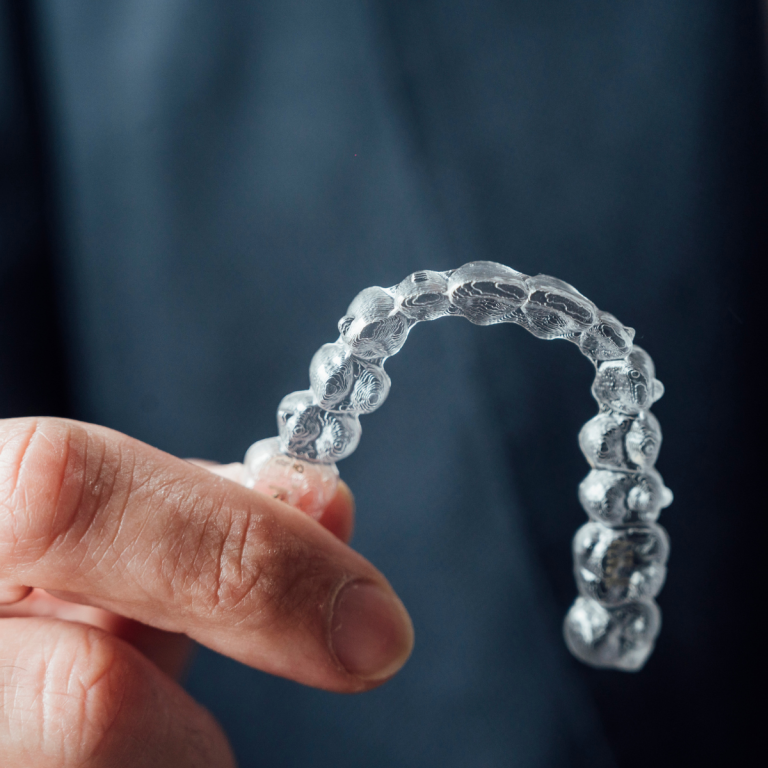In the world of orthodontics, several options are available for those looking to correct their smile. One of the most common decisions patients will have to make is whether to choose braces vs clear aligners.
Let’s dive into it.
Traditional Braces
First, let’s talk about conventional braces, a time-tested, reliable method for teeth alignment.
Structured Rigidity
Traditional braces are composed of metal or clear ceramic brackets that are attached to each tooth and connected by wire. The wires and braces apply light forces to the teeth to move them into position. For severe misalignments, braces often provide the robust control that orthodontists need to move teeth into the correct positions.
Lifestyle
Braces require more patience to get used to initially. The braces can rub the lips and cheeks causing irritation until the tissues toughen up. Brushing and flossing require more time and attention. And lastly, hard food can damage or break braces so some foods may need to be avoided or altered when eating like cutting an apple into pieces to eat it.
Visibility
The wire and bracket system of braces makes traditional braces more visible than clear aligners, which some patients may not like. However, the introduction of newer materials, such as ceramic braces, allows for the more traditional teeth-straightening method with a more discreet look.
Time
These days, treatment time tends to be similar between braces and clear aligners. However, braces may have a slight edge on shorter treatment times compared to clear aligners.
Clear Aligners
Now, let’s pivot the debate to clear aligners.
Lifestyle
One of the most significant advantages of clear aligners is the lifestyle freedom they offer compared to traditional braces. Clear aligners are removable, meaning you can take them out to eat, drink, brush your teeth, and floss. You may also be able to eat a wider range of foods.
Transparent Aesthetics
Aligners are virtually invisible, which is a key selling point for adults or those conscious of their appearance. People may not even notice you’re wearing them.
Comfort
In some cases, clear aligners offer more comfort than traditional braces, with less rubbing than braces.
Compliance
Success with clear aligners requires the patient’s compliance and discipline of wearing them the recommended hours per day since they can be removed.
Time
Clear aligners may not be the best option for extreme teeth alignment issues and/or may take longer. These cases often require the strength and rigidity of traditional braces.
Conclusion: Braces vs Clear Aligners: Which is Better?
Your choice between braces and clear aligners should ultimately depend on your needs and condition. For those with severe teeth misalignment or specific needs, braces might be the more suitable option. On the other hand, if you are looking for a more aesthetic, comfortable, and flexible solution with mild to moderate alignment challenges, clear aligners might be ideal for you.
Remember, it’s always best to consult with trusted orthodontic professionals to help you make the best decision. Based in Evergreen and Conifer, CO, the team at Williams Orthodontics is equipped to guide you through this journey to a perfect smile.
Read reviews and get directions at our Williams Orthodontics Google Business Profile. Then book an appointment today

